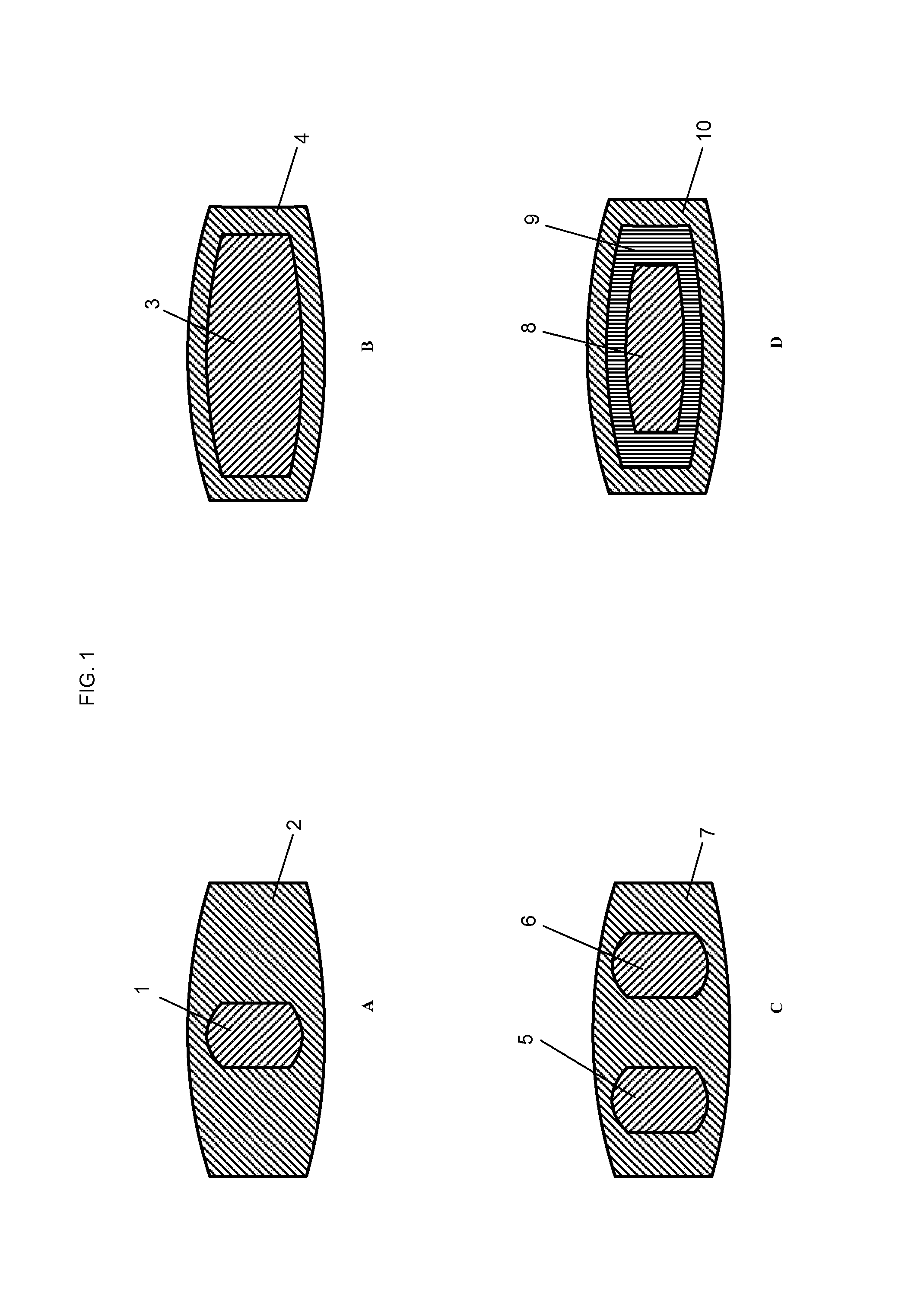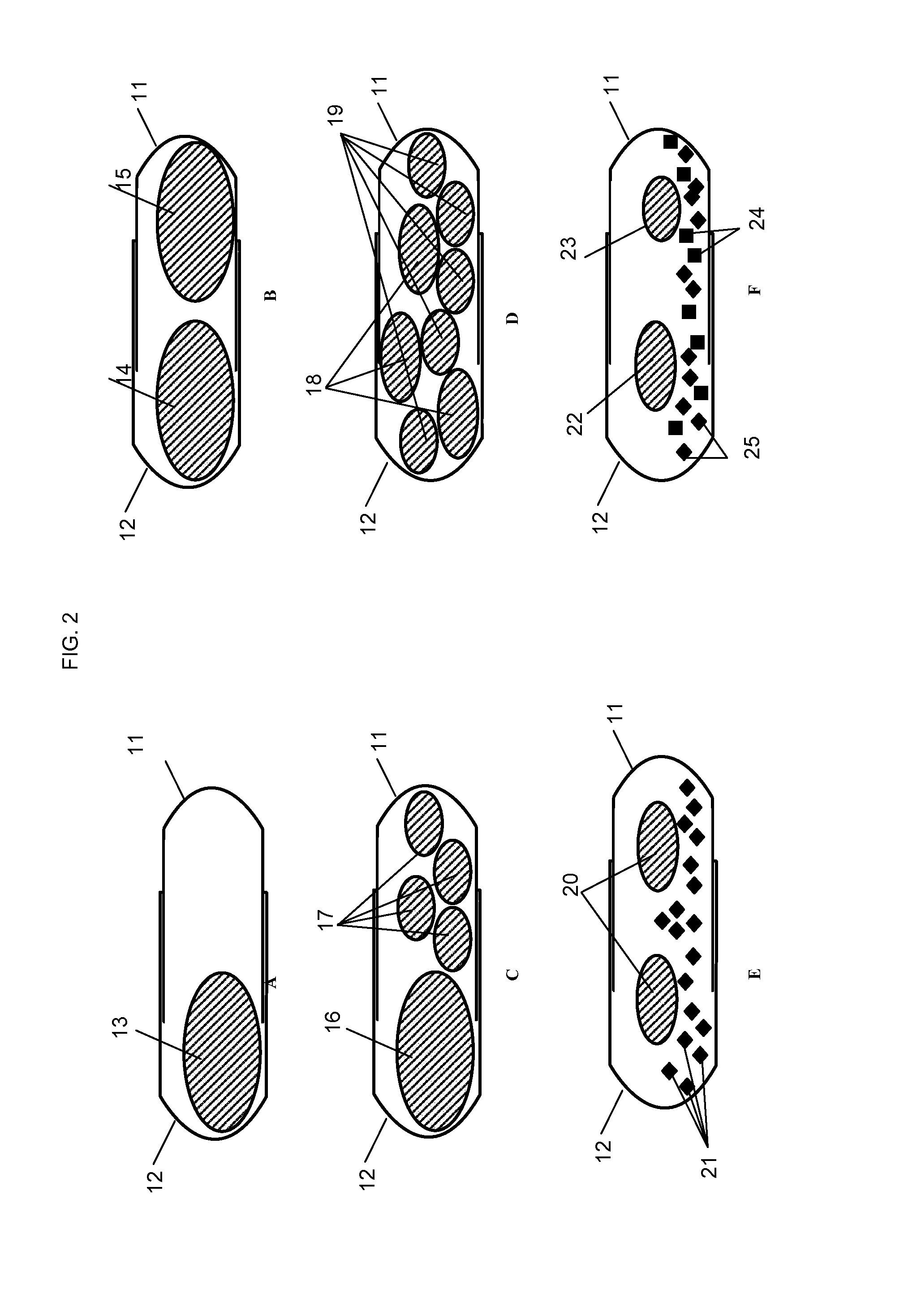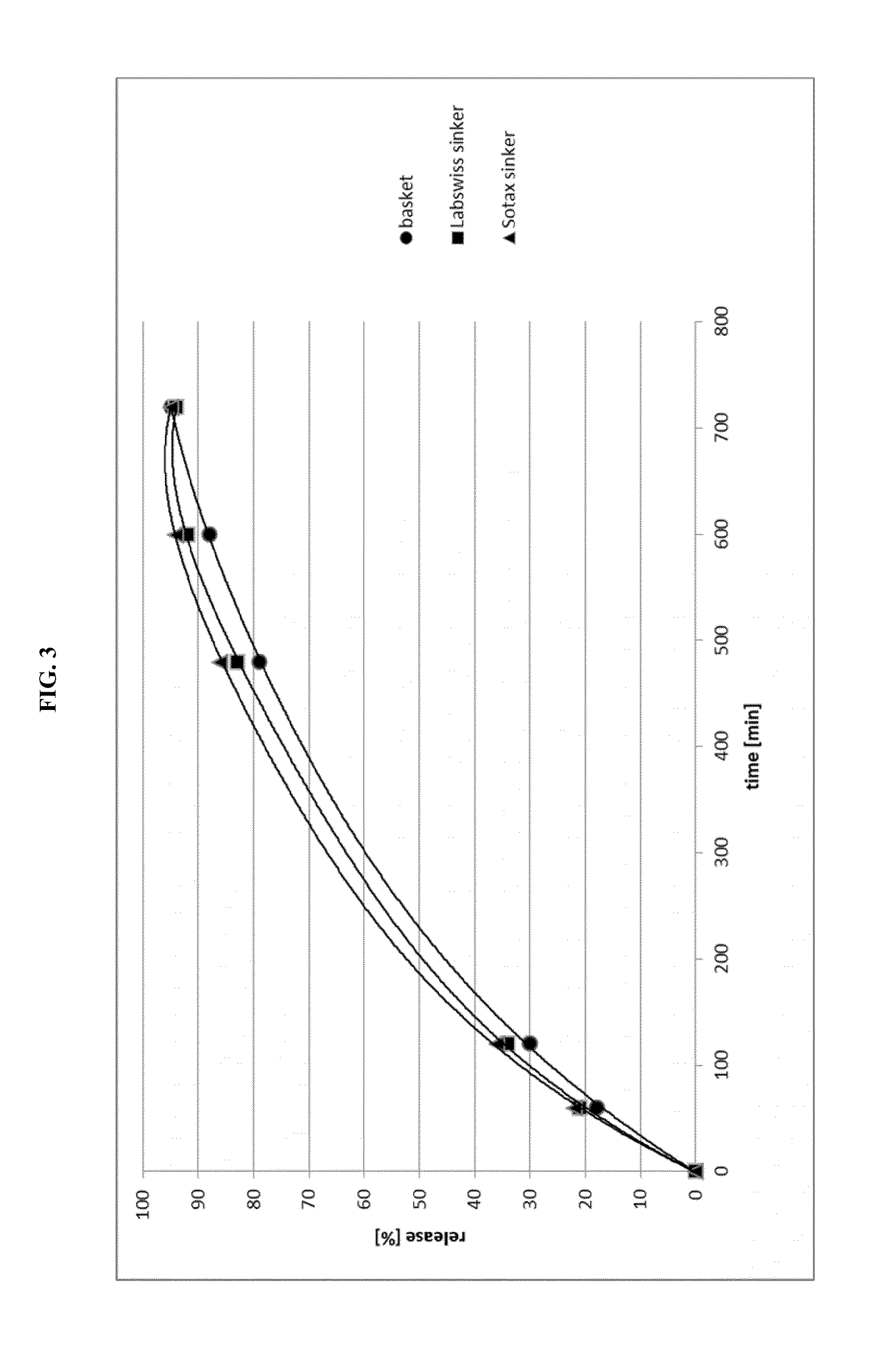A large number of pharmacologically active ingredients have a potential for being abused or misused, i.e. they can be used to produce effects which are not consistent with their intended use.
However, the presence of such aversive agents is principally not desirable and there is a need to provide sufficient tamper-resistance without relying on aversive agents and / or antagonists.
Such pharmaceutical dosage forms are useful for avoiding
drug abuse of the pharmacologically
active ingredient contained therein, as they may not be powdered by conventional means and thus, cannot be administered in powdered form, e.g. nasally.
Such intermediate cylinders, however, are not marketed as such, because they do not have the desired rounded shape.
The edges of the
cut surfaces may be comparatively sharp and do not comply with the general requirements concerning the outer shape of pharmaceutical dosage forms that are intended for
oral administration.
These high pressures are close to the upper pressure limit of the tabletting machines.
The compression may cause fracture of the punches and may also have a negative
impact on the properties of the dosage form, particularly storage stability, shelf-life and release characteristics.
Further, the intermediate cylinders need to be accurately placed between the punches thus limiting the overall speed of the continuous process.
Furthermore, as the intermediate cylinders are typically processed without adding exterior excipients, there are no lubricants that can provide a lubricating effect during compression and shaping by means of the tabletting machines.
The
coating process, however, often requires increased temperatures and when subjecting the tablets to these increased temperatures for the time that is required for coating, this may have a detrimental effect on stability of the active pharmaceutical ingredient and the excipients.
Further, the coating step may undesirably entrain residual solvents into the dosage forms.
Furthermore, the number of different colors that are available for
coating materials is limited.
It has been found that when directly applying a
colored film coating on the thermoformed dosage forms, the dyes in the
film coating, especially azo dyes, tend to discoloration by oxidation and other mechanisms upon storage.
Thus, when applying a
film coating to thermoformed intermediates, either specific dyes need to be employed, e.g. dyes based on iron oxides, thereby substantially limiting the number of available colors, or a laborious protective layer is needed between the thermoformed core and the outer
colored film coating in order to prevent discoloration of the dyes.
When conventional tamper-resistant dosage forms contain a comparatively high
dose of active pharmaceutical ingredient, they tend to become comparatively large.
Many patients, however, have problems in
swallowing large pharmaceutically dosage forms.
If the
controlled release portion of the formulation is easily defeated, the end result is a potential increase in
exposure to the active
drug and possible safety concerns.
As a result, a comparatively high
dose of the pharmacologically active ingredient is quickly absorbed leading to
high plasma levels within a short period of time and resulting in a
rapid onset of medicinal action, i.e. medicinal action begins shortly after administration.
This may cause comparatively
high peak plasma pharmacologically active ingredient concentrations and high fluctuations between peak and trough
plasma pharmacologically active ingredient concentrations which in turn may deteriorate
tolerability.
When providing these dosage forms with tamper-resistant properties, however, the
initial burst of release of
drug is difficult to achieve, as tamper-resistance typically relies on the presence of polymers that act as release matrix material slowing down the release of the drug from the dosage form.
A film-coating process is disadvantageous due to the high cost it produces during manufacturing.
The film-forming layer material is first dissolved, then sprayed on the core and finally the
solvent is removed, all leading to long process times with
high energy consumption.
Due to the high amount of active that needs to be present in the film-layer, this is a significant
disadvantage for a cost-competitive manufacturing of the
drug product.
The properties of the pharmaceutical dosage forms of the prior art are not satisfactory in every respect.
The overall pharmaceutical dosage form, however, does not have a significantly increased
breaking strength such that it can be chewed to a certain degree, until chewing disrupts the pharmaceutical dosage form to the level of the one or more particles.
This is particularly surprising as one would typically expect that when decreasing the particle size, release would be accelerated and tamper-resistance such as breaking strength and extractability would be deteriorated.
In the worst case, the physical
impact of the accelerated particles hitting the inner wall of the
capsule material may cause damages of the
capsule, especially over the sharp edges at the
cut surfaces of extruded cylinders.
When the empty volume inside the capsules is minimized, however, the particles cannot receive sufficient energy in the course of shaking and moving the capsules, e.g. during transportation.
Nevertheless, it is not possible that a given location of the pharmaceutical dosage form contains both, matter of the one or more particles and simultaneously matter of the further
excipient(s).
(ii) do not contain the physiologically acceptable
polymer, and / or
 Login to View More
Login to View More 









